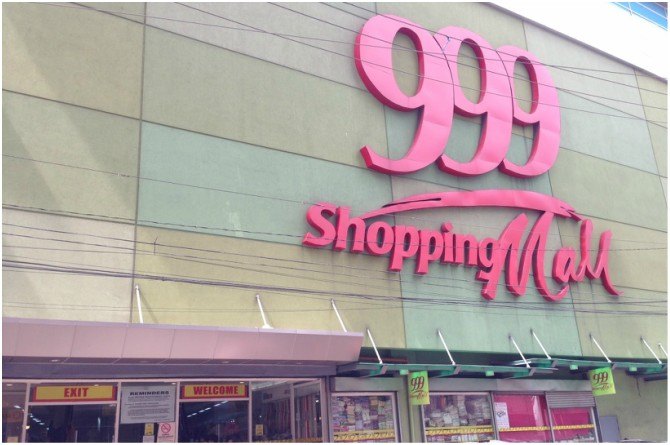Welcome In: The Two-Word Greeting Driving Shoppers Crazy

Table of Contents
The Psychology Behind the Annoyance: Why "Welcome In" Fails
The seemingly harmless "Welcome In" often backfires due to several psychological factors. Its repetitive and impersonal nature can quickly become irritating, especially for frequent shoppers. Let's break down the key reasons:
-
Overuse and Lack of Personalization: Imagine hearing "Welcome In" at every store you visit. The phrase lacks personalization and feels robotic, failing to connect with the individual customer. It's a generic greeting that doesn't acknowledge the shopper's unique needs or preferences.
-
Interrupting the Shopping Experience: A sudden, loud "Welcome In" can disrupt a customer's concentration as they browse. It interrupts their flow and can even feel intrusive, pushing them to leave rather than stay.
-
Perceived Insincerity: Many customers perceive "Welcome In" as disingenuous, feeling that the greeting is more about fulfilling a company mandate than genuine hospitality. This lack of authenticity can create a negative impression.
-
Cultural Differences: The effectiveness of greetings varies across cultures. What might be considered polite in one culture might come across as overly formal or intrusive in another. A more nuanced approach is needed to cater to diverse customer bases.
Here are a few scenarios where "Welcome In" falls flat:
- A customer engrossed in examining a product is startled by a loud "Welcome In."
- A customer feeling rushed or stressed is further agitated by an unwanted greeting.
- A customer already interacting with a staff member feels the greeting is unnecessary and redundant.
Alternatives to "Welcome In": Creating a Welcoming Atmosphere
Instead of the tired "Welcome In," retailers can create a welcoming environment using more engaging and effective strategies:
-
Specific and Personalized Greetings: Instead of a generic phrase, try something like "Good morning, can I help you find anything?" or "Hi there, welcome to [Store Name]! Is there anything specific you're looking for today?". This shows genuine interest and offers assistance.
-
Non-Verbal Welcoming Techniques: A warm smile, friendly eye contact, and subtly offering assistance can create a welcoming atmosphere without uttering a single word. Body language speaks volumes.
-
Ambient Atmosphere: The overall atmosphere plays a crucial role. Consider the music, lighting, and store layout. A calming and inviting environment enhances the shopping experience and makes customers feel more at ease.
Successful brands like Nordstrom are known for their exceptional customer service, often foregoing a standard greeting in favor of personalized interactions and attentive assistance. Their focus is on creating a seamless and enjoyable shopping experience, rather than relying on a scripted phrase.
Measuring the Impact: Data on Customer Responses to Greetings
Understanding customer reactions to different greetings requires data analysis. By tracking key metrics, retailers can gain valuable insights and optimize their approach.
-
Customer Dwell Time: How long do customers spend in the store? A welcoming atmosphere should encourage longer browsing sessions.
-
Conversion Rates: Do alternative greetings lead to higher sales? This is a crucial indicator of effectiveness.
-
Customer Satisfaction Surveys: Directly ask customers about their experience. Incorporate questions about the greeting they received and their overall satisfaction.
-
Social Media Sentiment Analysis: Monitor social media mentions of your brand to gauge customer sentiment regarding their in-store experience.
Retailers can gather this data through various methods, including in-store surveys, online feedback forms, and analyzing point-of-sale data.
Case Studies: Retailers Who Got it Right (and Wrong)
Many high-end boutiques prioritize personalized service and a relaxed atmosphere, often skipping the "Welcome In" entirely and focusing on attentive service. This approach proves that a welcoming atmosphere doesn't require a specific phrase. On the other hand, stores that overuse forced greetings often receive negative reviews online, highlighting the importance of a thoughtful customer experience.
Conclusion: Saying Goodbye to "Welcome In"—and Hello to Better Customer Service
In conclusion, the ubiquitous "Welcome In" is often ineffective and even off-putting. Creating a truly welcoming atmosphere requires a more personalized and nuanced approach. By prioritizing genuine interactions, attentive service, and a pleasant environment, retailers can significantly improve customer engagement and drive sales. Ditch the outdated "Welcome In" and focus on creating a welcoming atmosphere that fosters positive customer experiences. Explore different customer service best practices to discover what works best for your specific brand and target audience, improving customer experience and fostering loyalty. Remember, effective customer greetings are key to boosting sales and building a strong customer base.

Featured Posts
-
 From Runner Up To Champion Faizan Zakis Spelling Bee Victory
May 31, 2025
From Runner Up To Champion Faizan Zakis Spelling Bee Victory
May 31, 2025 -
 Nyt Mini Crossword Clues And Answers Thursday April 10
May 31, 2025
Nyt Mini Crossword Clues And Answers Thursday April 10
May 31, 2025 -
 Duncan Bannatynes Support For Life Changing Childrens Charity In Morocco
May 31, 2025
Duncan Bannatynes Support For Life Changing Childrens Charity In Morocco
May 31, 2025 -
 Como Preparar Una Brascada Guia Paso A Paso
May 31, 2025
Como Preparar Una Brascada Guia Paso A Paso
May 31, 2025 -
 Detroit Tigers Schedule Update Doubleheader Announced
May 31, 2025
Detroit Tigers Schedule Update Doubleheader Announced
May 31, 2025
